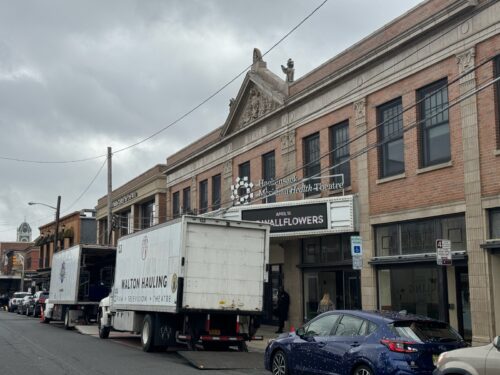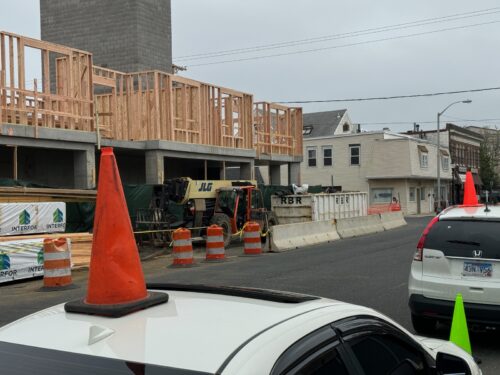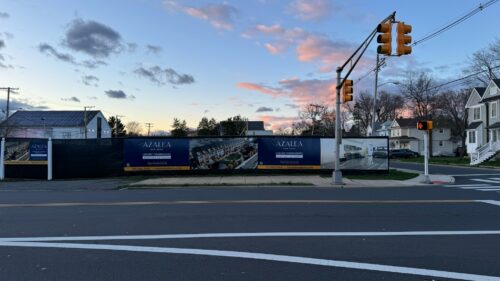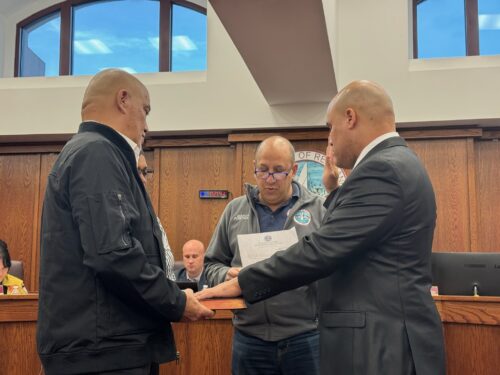Red Bank officials last night officially added dozens of West Side businesses to the roster of the 16-year-old Special Improvement District, an entity widely credited with having sparked a renaissance of the once-ailing downtown.
The expansion of the district, which is managed by the non-profit Red Bank RiverCenter, attracted more acute opposition last night than a presentation on the issue did in November. But the endorsements of the plan were at least as emphatic as they were three months ago.
“We desperately need it on our side of town,” said Danny Murphy, owner of Danny’s Steakhouse on Bridge Avenue. “It’s time for our side of town to become one with the rest of the town.” (Click map on right to view larger image.)
The expansion, approved by a 5-1 vote, with Councilman John Curley casting the lone “no” vote, marks a partial vindication of business owners and public officials who approved a townwide SID in 1991, only to have that plan successfully challenged in court, leading to its curtailment.
Included in phase II are all businesses between the west side of Maple Avenue and Bridge Avenue, and from Chestnut Street (not shown on the accompanying map) north to Oyster Point. Included are the new Hovnanian Enterprises headquarters, the Molly Pitcher and Oyster Point hotels, the Galleria on Bridge Avenue, and all businesses strung along West Front and Monmouth streets.
They’ll pay a speciall assessment on their property taxes to fund street improvements and districtwide promotions such as sales and special events. The current levy is 20.4 cents per $100 of assessed property value, or $1,020 per year for a property worth $500,000.
Residential properties within the district’s boundaries are exempt.
David Prown, whose door-and-window business is a tenant on Monmouth Street, lamented the lack of what he said was consensus-building in the expansion push. “One outreach meeting is not enough,” Prown told the council before it voted. “Whatever the mandate (of business owners) is, I fully support. I just want to make sure it’s a consensus.”
Also from Monmouth Street, Rachel Decker of Graman’s Vaccum & Appliance Parts said her initial support for the expansion, which would include the business she owns with her husband, John, had faded. An application before the zoning board for a 29-unit residential structure across the street from her shop, and plans for more multi-unit residential in the neighborhood, would seem to undercut the thrust of the expansion, which is to promote business and encourage more to fill in the zone, she said.
“I just don’t see how RiverCenter can complete its mission when blocks of Monmouth Street have been stamped out,” she said.
Mayor Pat Menna told Decker that the her “concerns about mix are appropriate,” and that the public would be hearing more soon on that issue. The borough, he said, is not in favor of adopting a so-called “transit village” plan, heavily encouraged by the recent State Plan, to foster more residential life in the immediate vicinity of train and bus stations. “We just don’t have the space, the density,” he said.
Alan Jacobs, the owner of the building at 116-118 Chestnut Street (home to Pauline’s Paperie), argued that his property should not be included in the district, because it is “95 percent or more office” space, most of that leased to the state of New Jersey. “I can’t understand how DYFS might benefit from being in the SID,” said Jacobs.
Among those who spoke in favor of the expansion plan were Tom Fishkin, owner of Readies Fine Foods in the downtown district; former Mayor Ed McKenna, making an appearance at the floor mike as a private citizen; Wooly Monmouth owner Dori Kershner; architect (and former RiverCenter chairman) Michael Simpson; and Dieter Bornemann, owner of The Little Kraut restaurant at Oakland Street and Bridge Avenue.
“It’s going to be awesome,” said Bornemann.
Curley, though, said he thought the plan was “too far, too large. We’re really jumping the gun.” He said there was no plan for building foot traffic, and “I don’t like to tax people without having a specific plan in mind.”
Councilman RJ Bifani, though, countered that “it’s not up to RiverCenter to come up with a plan. It’s up to the group that spends the money to decide where that money should go.”
Kaye Ernst, who’s resignation from the council was effective at the meeting’s end, said she’d initially found resistance among business owners, but “I really don’t see anything that should hold us up from moving forward at this time.”
The plan, officials said, is to expand the size of the RiverCenter board of directors, now at 30, to give proportional representation to businesses on the West Side.























